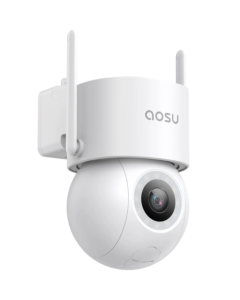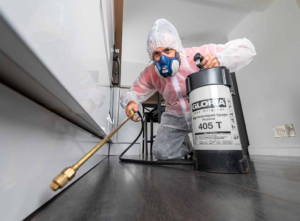Mobile Surveillance Cameras can monitor important areas of your home or business, such as cash drawers, jewelry cabinets, safes, and on-site equipment. It can also act as a deterrent to crime, preventing break-ins and unwanted intrusion.
The best part is that they can be viewed from anywhere with an internet connection using your smart device.

A security camera’s motion detection features let it know when there’s activity. Once triggered, it’ll start recording footage and send you a notification on your mobile device. These alerts allow you check in and see what’s happening without having to visit the property. You can also set up your security camera to record at certain times. This can help you keep tabs on your kids or pets.
Whether you’re looking to install an indoor or outdoor camera, motion sensors will ensure that your system will only trigger when necessary. They’re typically powered by infrared sensors that look for changes in heat to detect motion. They’re more likely to be triggered by people or animals than by things like plants or cars. As a result, they have a lower false alarm rate than other sensors.
A motion detector’s settings will determine how sensitive it is and what kind of activity it’s triggered by. You can adjust its sensitivity via the app, although it’s best to talk to a security professional before making any adjustments to your system. Otherwise, you may end up with a ton of motion notifications that aren’t actually important.
There are several different kinds of cameras that have built-in motion detection capabilities. These include dome cameras, doorbell cameras, and IP cameras. IP cameras have become increasingly popular because they offer high-quality video and image quality at a much lower price than other types of surveillance equipment.
The main difference between IP cameras and other types of security cameras is that they can connect to your home or business’s network and be accessed from the internet. This is an important feature for many homeowners, especially if they want to monitor their property from work or on the go.
Another benefit of an IP security camera is that it’s often capable of recognizing the difference between people and other objects to reduce the number of false alarms. This is a significant improvement over traditional methods of motion detection that depend on visible light and are susceptible to blinding backlighting. This type of technology is similar to the way that a traffic camera works and is commonly used on motorways and in cities to monitor congestion.
Night Vision
Security cameras are a great tool to help deter theft and vandalism on your business property, and also to keep an eye on what is going on. They are also a good tool to use when you want to improve the safety of your employees, customers, and inventory. Security systems can be adapted to fit the needs of any business.
One of the most important features that you should look for in a security camera is night vision. Security cameras with night vision can capture images in dark conditions without the need for a light source, which makes it an effective tool to monitor your business when it is closed.
There are a few different types of security cameras that come with night vision capability. Some are based on infrared technology, which can see the heat of an object and make it visible to the camera lens. Other models are based on thermal imaging, which can detect radiation and make small temperature differences visible. These cameras are often used to complement existing surveillance networks, as well as in aircraft for night vision.
The number of security cameras you need depends on the size of your business and the area you are trying to cover. You should place them around your building, as well as any outdoor areas where there is potential for criminal activity to occur.
For example, you may want to put security cameras near any entrances on the ground floor of your business, as this will provide a barrier to anyone trying to enter your building illegally. You should also consider placing them in any hallways that you frequent, as this will allow you to keep an eye on anything that happens within those spaces.
Another option for night-time monitoring is to use a network video recorder (NVR). These cameras are Wi-Fi-connected, which means that they can send live footage to your computer or smartphone. They typically use either a CMOS or CCD sensor to take pictures. Some cameras also have a zoom feature, which allows you to view objects at a distance.
Panic Button
Panic buttons are a security feature that can be used to alert authorities or designated contacts in an emergency situation. They are often small, wireless devices that can be worn as pendants or keychains. They can also be mounted as compact buttons that are discreetly placed in high-risk areas of your home or business. When pressed, they instantly notify the monitoring system, which can either alert local police or a professional monitoring service that will immediately dispatch emergency services to your location.
Security panic buttons are an excellent safety feature for businesses, especially those in high-risk industries like convenience stores, hotels, and gas stations where staff members may be at risk of physical altercations or robberies. Additionally, they can help keep students safe in schools, where over 900 educators are threatened every hour of the school day and over 2 million students are physically assaulted each year.
Depending on your needs, you can choose between audible or silent duress buttons, as well as whether your button will automatically contact emergency services or require verification before sending a signal. You can also choose to pair up to 10 cameras to each panic button, which allows you to quickly pull up live and previous video footage of the area where the button was pressed. This will provide critical context to emergency responders, helping them assess and de-escalate situations.
To ensure that the panic button is always available, you can choose to automatically record and store video footage when it’s triggered. This will streamline post-incident review, eliminating the need to sift through hours of footage. Additionally, you can set up your panic button to automatically activate a video feed when it’s triggered, which will further reduce post-incident review times.
Residential security systems are installed with a few unique concepts in mind. In addition to medical emergencies, many homeowners want the ability to alert authorities or trusted contacts in case of a break-in or other security related incidents at their home. Homeowners can also use panic buttons to monitor and protect their children, pets, or elderly family members.
Remote Access
When you choose a security camera with remote access, you can check in on your property no matter where you are. You can use the mobile application on your smartphone or tablet, or you can log in to view your camera’s feed through a web browser. This method requires that you have a stable Internet connection and that your surveillance brand uses encrypted communication software to keep your footage secure.
A good security camera should also have a feature that lets you set up a custom password. This is important for businesses, as this prevents unauthorized users from viewing your footage. Also, look for a security camera that has an option to automatically turn on and off its lights to deter intruders from entering your building or yard. Some security cameras offer night vision, which is useful for monitoring outdoor spaces when it’s dark. Some also come with a microphone, which can capture sound. Choosing a security camera that is PoE (Power on Ethernet)-compatible is a good idea as this simplifies wiring and saves you money.
Most security camera systems let you download image snapshots to a network file server on the local network. However, many do not support uploading video files as this would require much more bandwidth and storage space. Video clips can also be saved on a separate offsite storage server for added security. Generally, camera recordings are kept for a specific period of time, depending on your security policy.
The privacy concerns of remote access to a camera’s footage are serious and must be considered before you purchase a system with this capability. Whether you’re watching your children play in the backyard or checking on the babysitter at home, many people are uncomfortable with knowing that their private activities may be monitored. Even in the workplace, some feel that a hidden camera is an invasion of privacy and can deter employee productivity.
Some alarm companies, such as SimpliSafe, offer video verification, which allows you to share your livestream with a local monitoring center during emergencies. This is supposed to speed up police response time, but you’ll want to carefully consider your home’s privacy before opting for this feature.








